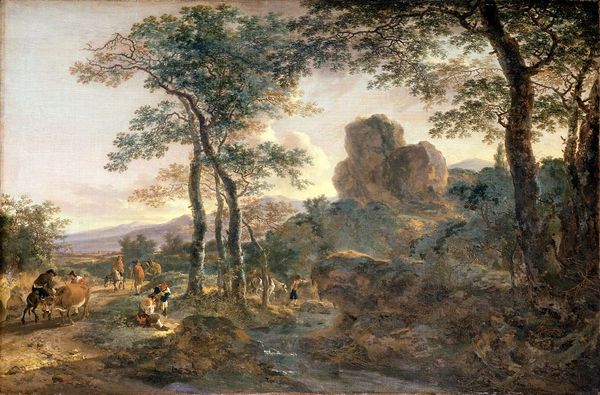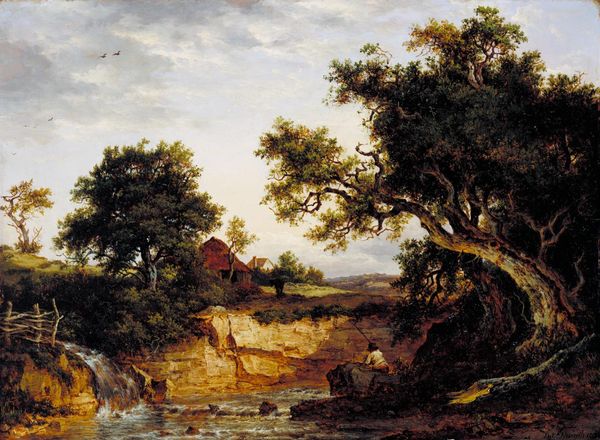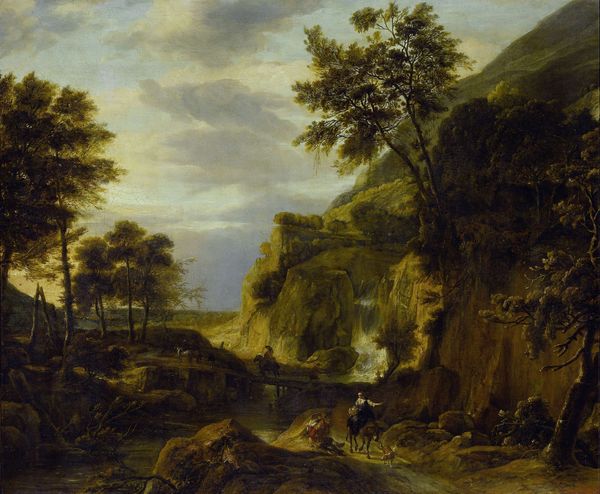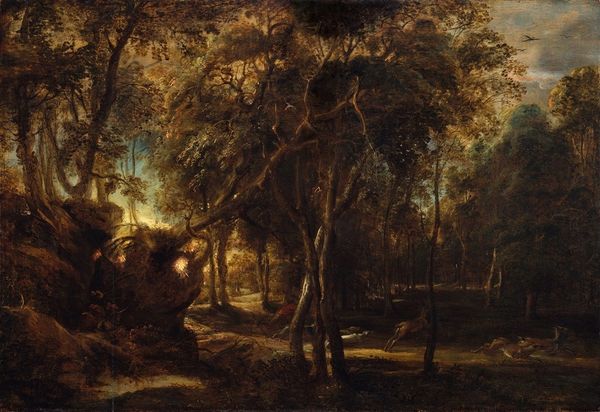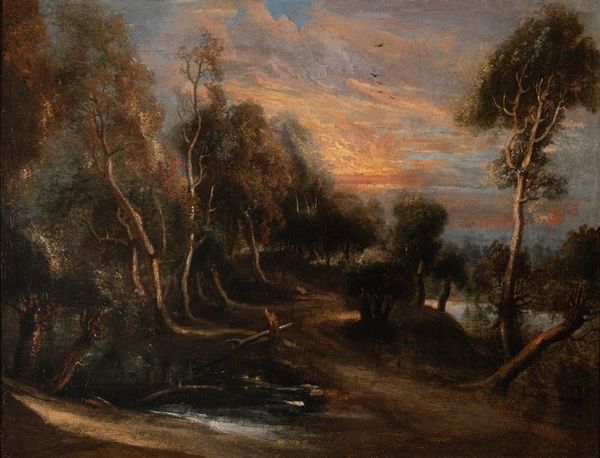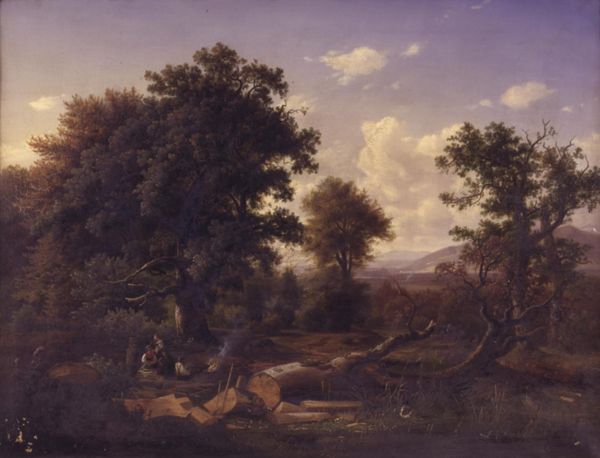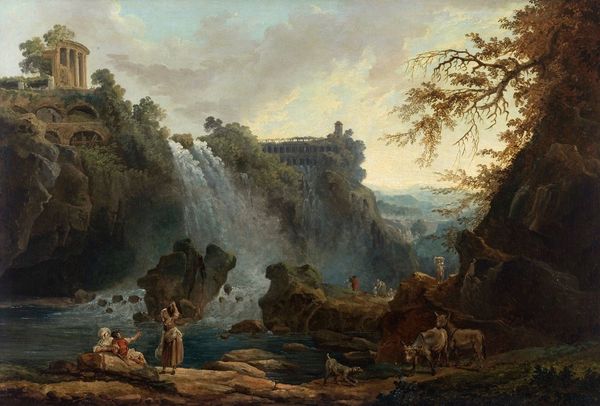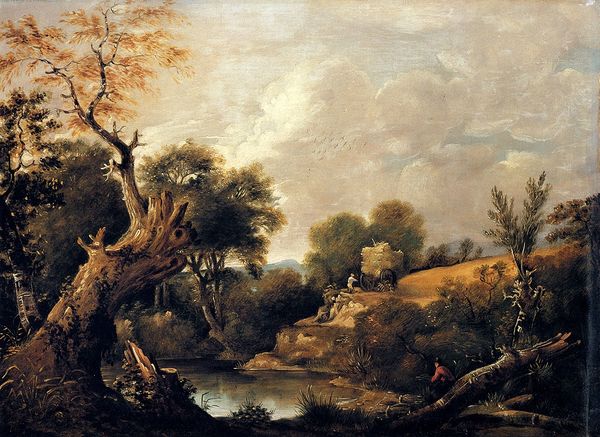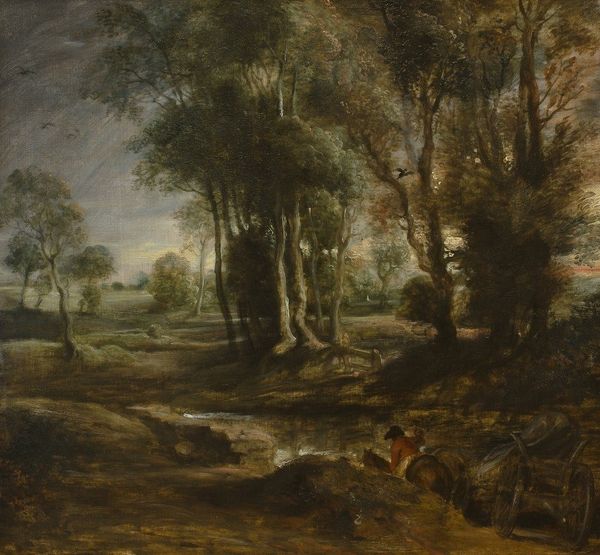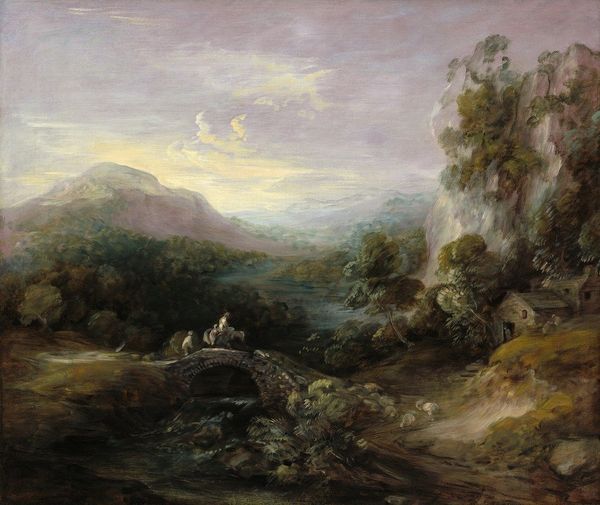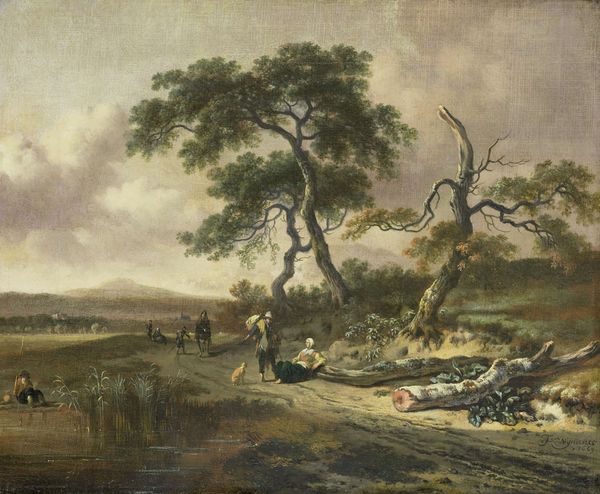
painting, oil-paint
#
painting
#
oil-paint
#
landscape
#
oil painting
#
romanticism
#
genre-painting
#
realism
Copyright: Public Domain: Artvee
Curator: What a fascinating painting to explore! This is James Ward's "An Overshot Mill," painted sometime between 1802 and 1807 using oil on canvas. Editor: The painting evokes a sense of earthy immediacy. I'm struck by the composition’s balance between labor and landscape; the rugged textures of the mill feel palpable, almost as if I can reach out and touch the damp stone and straw. Curator: Absolutely, the romanticization of rural labor is definitely a strong element here. Ward places the mill within the context of burgeoning industrial society, painting laborers almost as a counterpoint. There’s a complex tension visible between human industry and nature. Do you see any sense of resistance there? Editor: Certainly. The materials used to construct the mill —wood, stone, thatch— speak to the skill and labour involved. These materials and the water wheel emphasize localized, almost pre-industrial means of production and human engagement with nature, long predating globalised exploitation of human and natural resources. Curator: Exactly. By framing the laborers almost idyllically, despite the labor required to maintain the mill, Ward highlights the dignity and intrinsic value of physical work often ignored in rapidly changing social structures. Even the woman washing clothes in the stream is given that romantic glow! Editor: Indeed! One has to question the degree to which the composition represents Ward's genuine engagement with labour or the idealised rural images produced for consumption by wealthier elites. After all, paintings were commodities too. Curator: And to that point, let's not overlook the inherent patriarchal structure that this labor also assumes and depends upon. Where and what labor is celebrated or ignored and by whom...it all carries meaning in a broader sociopolitical narrative. Editor: Good point. These considerations definitely compel me to further investigate the function of such visual representations in a world undergoing vast economic transformation and rapid exploitation of labor. Curator: For me, too, it encourages me to re-evaluate Ward's vision, accounting for how romantic portrayals are steeped in ideologies relating to class, gender, and access to labour, and how these shape narratives that still resonate today.
Comments
No comments
Be the first to comment and join the conversation on the ultimate creative platform.
